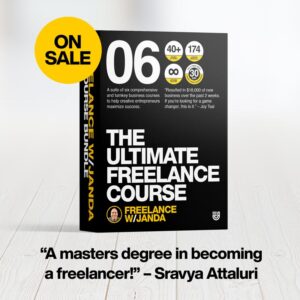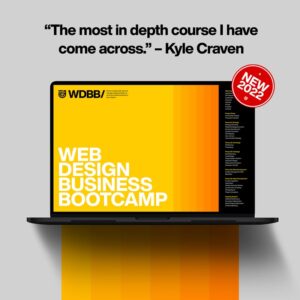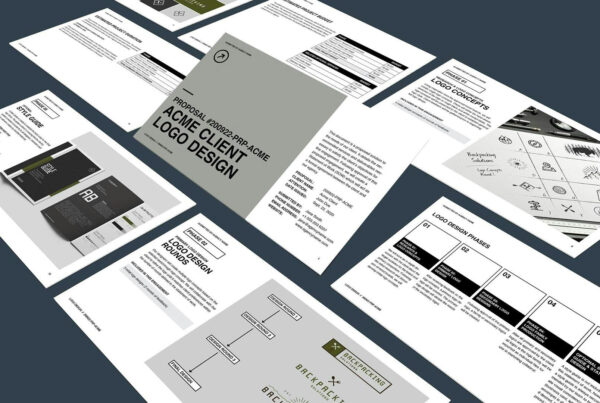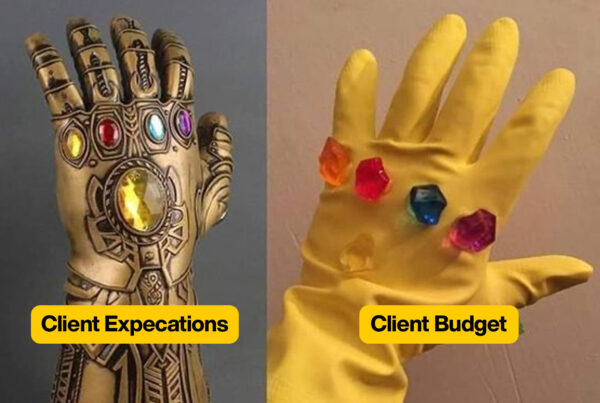You worked hard to get your proposal “just right” for this amazing opportunity. The presentation to the client could not have gone better and they gave you the formal, “We’ll get back to you soon.”
Now what? What is my follow-up strategy? How much follow-up makes me look professional? And how much follow up makes me look needy? Where is the sweet spot right in the middle (helpful vs. needy)?
I wrestled with all these questions many times. In this article I’ll give you my recommended “sweet spot” for proposal follow-ups.
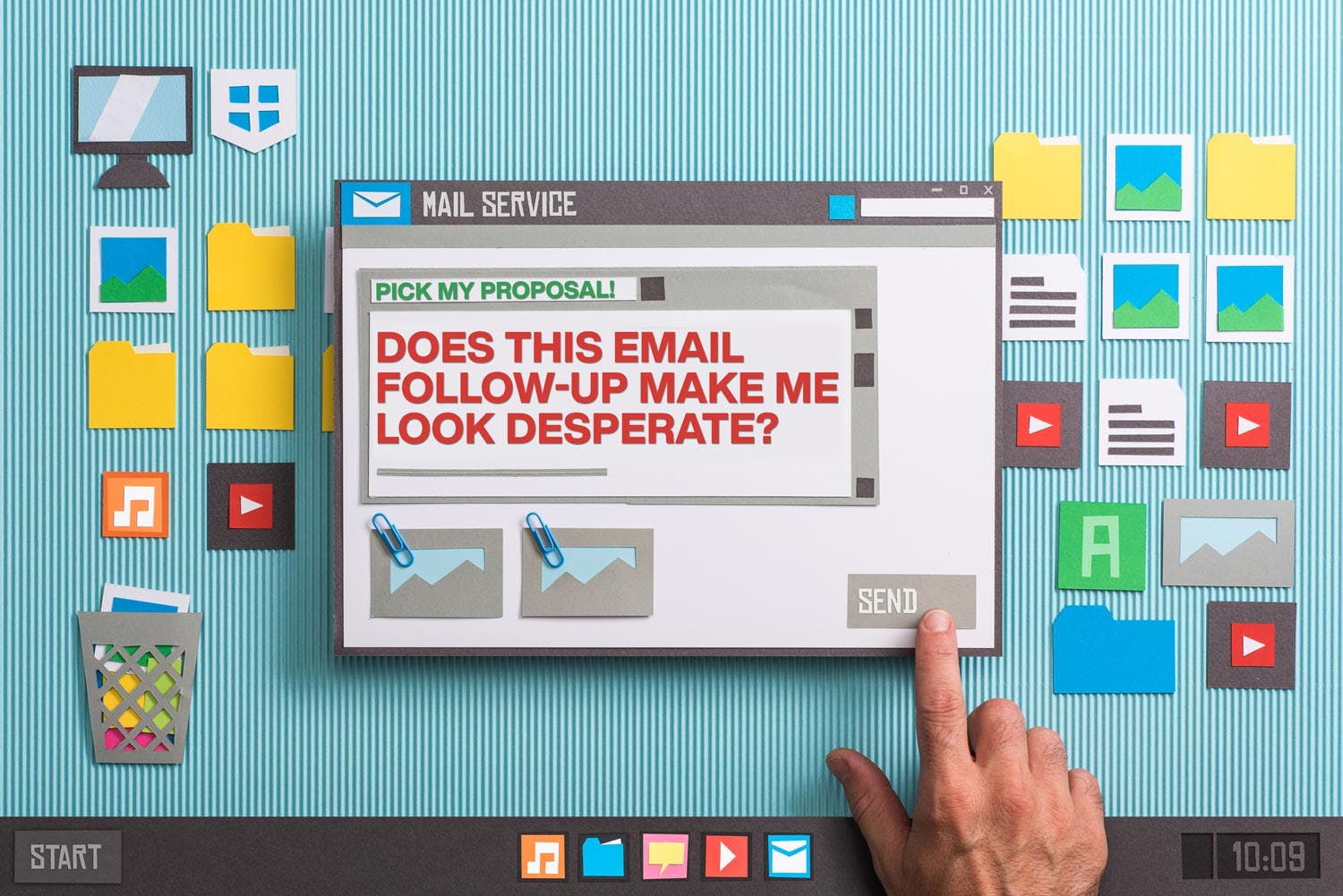 The first thing we need to agree on is that people typically do not buy creative services on their first interaction with the creative candidate. As the old adage goes, “People do business with people they know, like, and trust.” It takes multiple interactions to build that trust and your proposal follow up strategy is a great way to have several positive interactions with your potential client. Let’s look at how it may go and how to follow up…
The first thing we need to agree on is that people typically do not buy creative services on their first interaction with the creative candidate. As the old adage goes, “People do business with people they know, like, and trust.” It takes multiple interactions to build that trust and your proposal follow up strategy is a great way to have several positive interactions with your potential client. Let’s look at how it may go and how to follow up…
Day 1: Qualification Conversation
You and the potential client have a conversation about their business challenges and together you agree to move forward to a formal proposal for their project.
After the qualification conversation send the client an email like this.
“Thanks so much for meeting with us. We’re excited about potentially working with you and confident we can produce the results you’re looking for. As we discussed, we will have a proposal ready for you at the end of the week. We look forward to presenting our plans to help your business.”
Day 4: Proposal Presentation and Follow-Up #1
You’ve crafted the perfect proposal and you present it to your client. Everything seems positive.
After the meeting you send the client a digital version of the proposal and a message like this one.
“We enjoyed meeting with you to present our proposal. Thanks for your time. Attached is a digital copy of our proposal. Could we schedule a time for early next week to answer any questions you may have?”
If the client replies and schedules a time for you to answer questions it is a very positive sign that you are in the running to win the project. Get on the call, resolve any outstanding concerns, and get the project started.
If the client does not reply to your message, keep reading.
Day 6: Proposal Follow-Up #2
You didn’t receive a reply from your client after you sent the digital proposal. You’ve waited two days. It is time to follow up. Here is your script.
“I’m emailing a quick follow-up to confirm you received the digital proposal we sent a couple days ago. I didn’t hear back from you (I know you’re so busy) so I’m checking in. Please let me know that you received this message. I’ll give you a call tomorrow if I don’t hear back (just wanting to make sure my messages aren’t dropping into your spam folder).”
No reply to the email? Call the client. If they answer your call, confirm that they received the digital proposal and offer to answer any questions that may have come up.
If they haven’t replied to your emails or phone call, it doesn’t look good, but not all is lost.
Day 10: Proposal Follow-Up #3
The potential client hasn’t responded to any of your communication. Shame on them, but it has only been a week and a half. They may have had some. Replace judgement with concern and reach out with this message.
“Just checking in again. Hope you are doing well and I assume you’ve been busy. As I’ve mentioned in my previous messages, we would love to work with you. Please reach out when the time is right.”
Day 30: Proposal Follow-Up #4
Still no word from your potential client. At this point, the project is most often all but lost and you probably should be thinking, “Do I really want to work with someone who has this bad communication etiquette?” The answer to that question is, “no,” but you decide to follow up again anyway.
“We still haven’t heard from you regarding our proposal but wanted to follow up and see if you’ve made a decision yet or if you have any questions we can answer. Also, just as a reminder, the price and details of our proposal are valid for 60 days. We’d love to work with you at the price we quoted. Please let us know if you have any questions that may be delaying your decision.”
Day 50: Proposal Follow Up #5
In most situations a “no reply” after that series of follow-ups usually means “no deal.” But there is no harm in one last shot over the bow. Here is your final message.
“We assume you’ve decided to go with another vendor or perhaps not proceed with the project we discussed a couple months ago. That being said, we thought we’d send you one last message to check in. As documented in our proposal, our price and timeline is valid for 60 days (10 days away). If you have any questions, we would be happy to answer them. If you would like to move forward, we would be happy to work with you and are confident we can provide the results you’re looking for.”
Semi-Annual Follow-Ups
Sometimes opportunities come from checking in periodically. My recommendation here is that you check in with clients like this once or twice per year (perhaps every six months, or so). A message like this will help you stay on their radar in case they have other needs or spark a referral to someone they know.
“Hope you are doing well! We loved discussing your business earlier this year. We are just reaching out now to see if you have any other challenges we could help with. Anything at the forefront? We’d be happy to help!”
Another (and oftentimes more effective) way to follow up with your potential client is to offer something of value. Sending them an article can be a super easy way to touch base.
“Hope you are doing well. I just stumbled upon this article www.____.com/article and thought of you. The article related to a few of the things we discussed earlier this year. I especially found this segment to be interesting…”
Written sequentially like this, it may seem like a lot of “follow-ups.” It really isn’t. A handful of proposal follow-ups over the course of seven or eight weeks and a “semi-annual check-in” isn’t too much. However, you should use your judgement. If it seems “desperate” or needy, it might be. Every situation is a bit different.
I have found that in most situations following up helps close deals. And sometimes, the client will FINALLY reply after follow up number three or four and FINALLY share with your the concerns they have about your proposal.
Final Thoughts on Proposal Follow-Ups
- Business decision makers get busy. Your potential client may be juggling a lot of balls and replying to your messages may have become low priority versus some of the other challenges they are facing.
- Businesses have shifting priorities. It is possible that your potential client’s needs have changed. This is where the “semi-annual check-ins” can be effective.
- If it is a priority and they are genuinely interested in potentially working with you, they will be in touch. Sometimes patience is the key.
- Don’t be afraid to follow up with a phone call. It is easy to hide behind emails, but phone calls and face to face meetings are the real opportunity to resolve your client’s concerns and get the project moving forward.
- Some people suck at communicating. They prefer ghosting you than responding to your email. I’ll never understand this, but if you have a client who ghosts you during the sales process, they may not be the best client during the project. You can safely expect poor communication to continue. Be careful not to “hope” for the work too much. It may be a disaster waiting to happen.
- Don’t be afraid to follow up with your potential client. It is called “sales” and it is required for you to run a successful business. Haha. You spent time crafting a proposal on behalf of your client, it is your business right to follow up.


